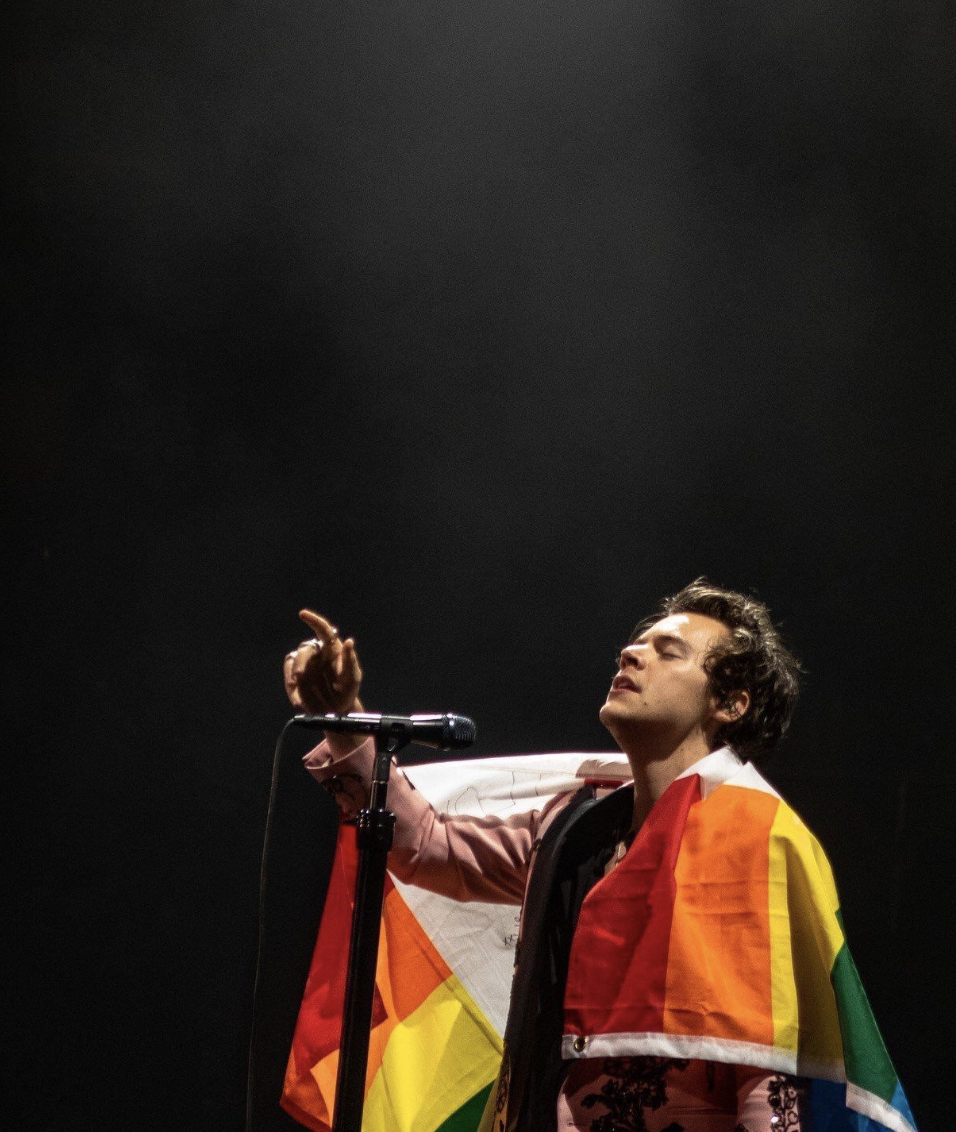Harry Styles Fails the Queer Community. Yeah, I just said That.
As crowds filed into Madison Square Garden, fans with glitter in their hair chanted “Harry! Harry!,” and the lights suddenly went dark. One spotlight remains, illuminating Styles in pink bell bottoms and a pride flag clutched in his right hand.
As the world's biggest pop star, Harry Styles has been compared to Freddie Mercury, David Bowie, and Howard Ashman. All artists pushed the boundaries of how audiences expected male performers to act. Like his pop forefathers, Styles embraces feminine clothing, glitter, and queerness. Yet Mercury, Bowie, and Ashman were queer in a time when queerness was regulated to silence. They defined queer culture for a generation, and their heroism has laid the foundation for Styles to dress and act in ways that some fans call liberating while some critics call queer-baiting. Can Styles appropriate the queer culture created by his icons without actually being queer?
This question has plagued the queer community. Some see him as an icon of queer liberation, while others worry that by appropriating queerness for attention he is adversely minimizing the lived experience of queer identities. Queer culture is not defined by mere clothing and aesthetics alone; queer culture is defined by its counter-cultral messaging. Crossdressing, which Styles did famously on the cover of Vogue, harkens back to 1960s New York when cross-dressing was a form of protest as the state began criminalizing those that don’t dress within the gender binary. Even in countries like Ghana and Poland, where queerness is criminalized and queer people face alarming rates of violence, crossdressing remains an avenue to protest the criminalization of identity. When Styles crossdresses, claiming he “just loves women’s clothing,” he is separating the radical act of breaking the gender binary from its anti-homophobic origins. Of course, welcoming the abolition of the gender binary remains paramount to the feminist and queer movement. But to use cross-dressing as a catapult to fame, to not even mention the legacy of cross-dressing in queer spaces, is to ignore the realities faced by the queer community.
Ignoring these realities is something Styles is arguably best at. Beyond the attention awarded to him after the Vogue cover, in nearly every TikTok and every concert post on Instagram Styles is seen running through the crowd with a pride flag waving behind him. While, yes, Styles does at least bring attention to queerness through his appropriation of queer symbols, his public presence and dominance as a household name have only grown once he claimed queer expression as his expression.
In the 1980s, Bowie, Mercury, and Ashman were critical in the fight against AIDS and the anti-queer rhetoric the epidemic encouraged. But in a time when “Don’t Say Gay Bills” and limits on HIV medication are being introduced in State Houses across the country, where is Styles? On the ground in Flordia protesting with the queer community? Fighting against the homophobia spewed in the Senate as gay marriage was being codified into law? No, Styles cannot be found. Styles can be found, however, waving a pride flag; yet, we don’t watch him actively fighting for the very community he emulates.
To be clear, Styles has not publicly disclosed his identity, and respectfully so. However, if Styles wants to continue his spectacle of queerness, he cannot continue to reduce his actions to mere creative expression. His identity – from his clothes, his attitude, his aesthetic – centers around being different. This difference he has appropriated is only welcomed because he knows his base will always roar louder than the queer community, begging for his recognition. If Styles’ did have his base, if he expressed queerness in the rural corners of Indiana or the urban alleyways of Warsaw, would he still be elevated to the status we give him? Definitely not, because the reality is that in many communities which he tours queerness is a crime, a joke, or a death sentence. But for Styles, it’s fame.
Labels are dangerous. Telling people how they can and cannot express themselves is dangerous. But in a world fraught with homophobia, Styles’ wealth, race, and fame should not allow him to ignore taking political action in favor of maintaining and increasing the worth of his brand.
Anyone, regardless of identity, should be able to wear a dress, use makeup, or wear pink bell bottoms. Not everyone, however, has Harry Styles’ influence. For a star that can make nearly anyone bend, that can draw millions of people into an arena, that can hold onto someone’s attention for hours, Harry’s duty to the queer community is much more than waving a pride flag at Madison Square Garden or wearing a dress in Vogue.
Strike Out,
Writer: Connor Walsh-Marrott
Editors: Katie Sharp, Natalie Daskal



